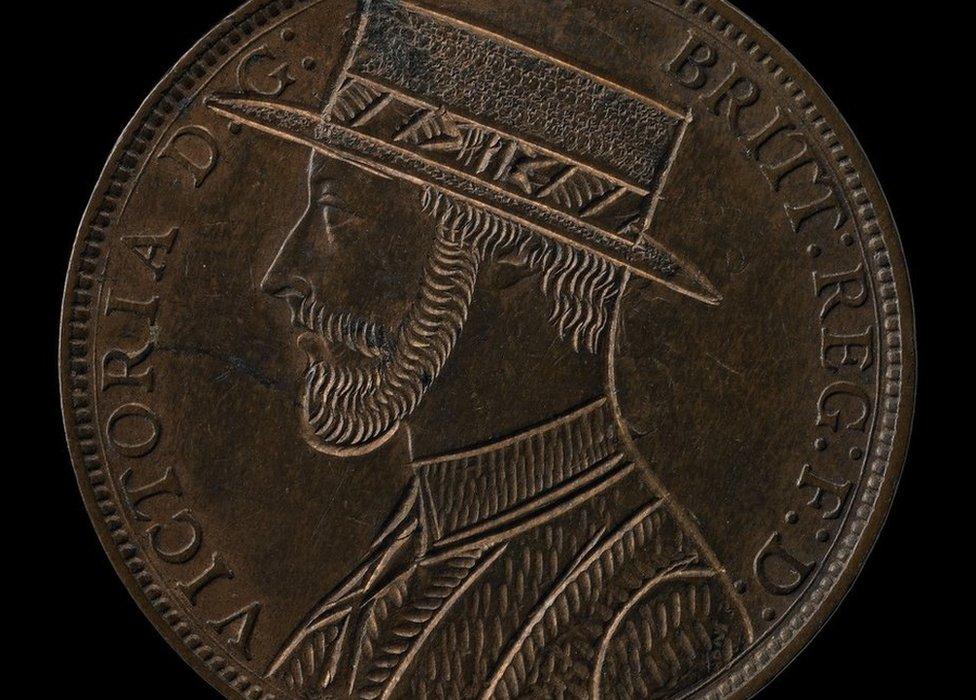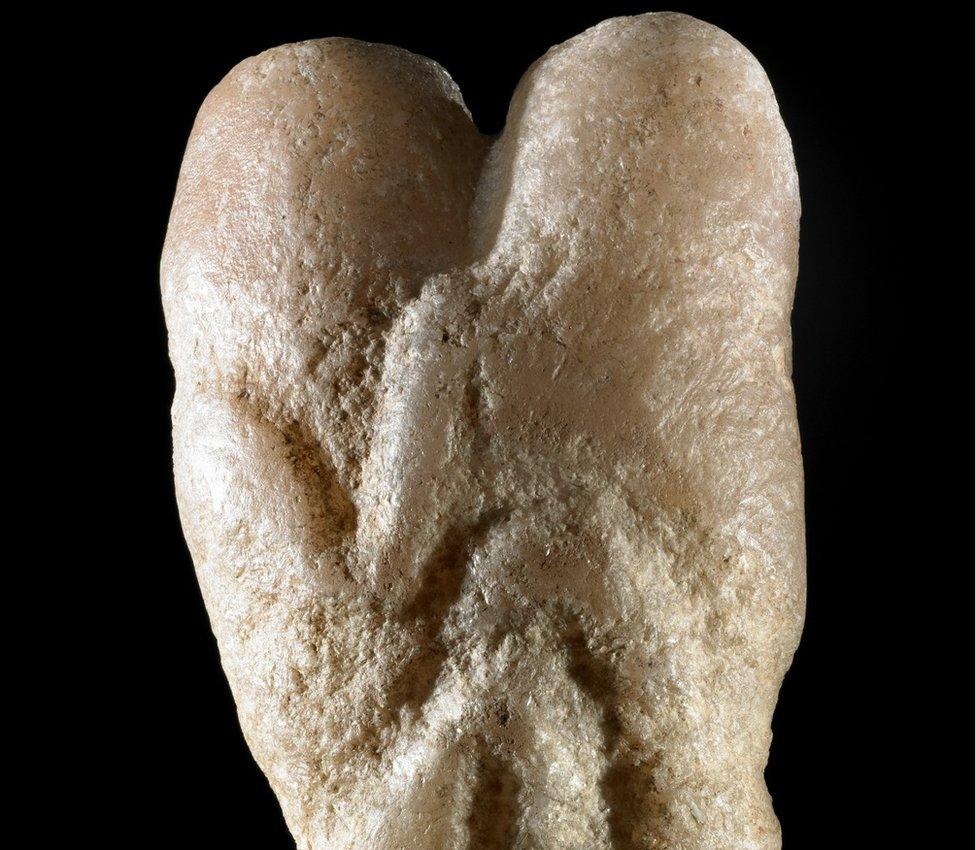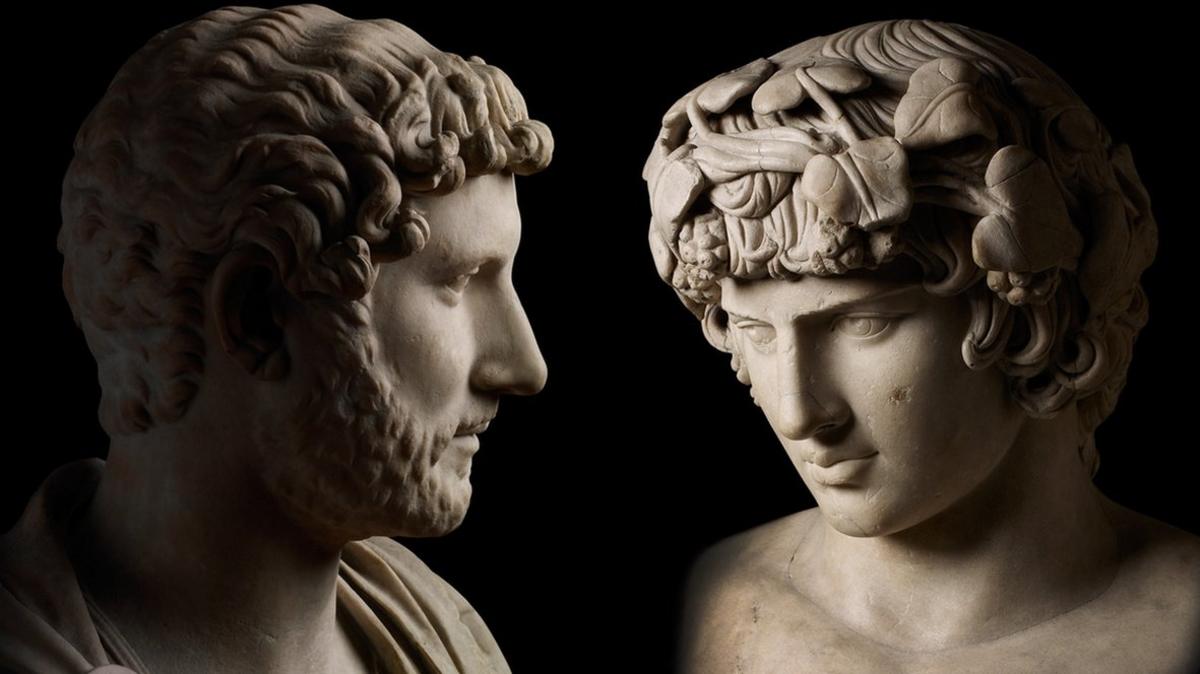Lost LGBT stories explored in Nottingham exhibition
- Published

The exhibition is based on the book A Little Gay History
An exhibition exploring lost and hidden lesbian, gay, bisexual and transgender stories has opened at the National Justice Museum.
Objects including LGBT campaign badges and a 11,000-year-old sex sculpture from the British Museum's collection are on display in Nottingham.
The exhibition, based on the book A Little Gay History, travels from ancient times to the present day.
Its curator said it explored the lives of people "whose names are lost to us".

Drag Queen Deck by Ōtsuka Takashi

A selection of LGBTQ campaign badges are on display
Bev Baker, the National Justice Museum's curator and archivist, said: "Same-sex love and desire and gender diversity are integral to human experience.
"How they've been expressed culturally has varied widely globally, and over time.

A re-engraved "Drag King" penny, British, minted in 1882
"This exhibition tells of the experiences and lives of those whose names are lost to us, what the novelist EM Forster memorably described as a 'great unrecorded history'."
The work of Professor Richard Parkinson, who wrote A Little Gay History, explores artistic portrayals of what it means to be gay and the difficulties in finding records of same-sex desire.
Historical figures including the poet Sappho and the Roman emperor Hadrian and his lover Antinous feature in the exhibition, alongside work by artists including David Hockney.
One of the objects in the exhibition dates back 11,000 years and is believed to be the oldest known sculpture of two people having sexual intercourse.

The Ain Sakhri Lovers sculpture is believed to be about 11,000 years old
The Ain Sakhri Lovers was found in a cave near Bethlehem.
The exhibition opened at the National Justice Museum will close on 3 March, before travelling to Bolton Museum and Norwich Millennium Library.

Follow BBC East Midlands on Facebook, external, Twitter, external, or Instagram, external. Send your story ideas to eastmidsnews@bbc.co.uk, external.
- Published21 June 2013
